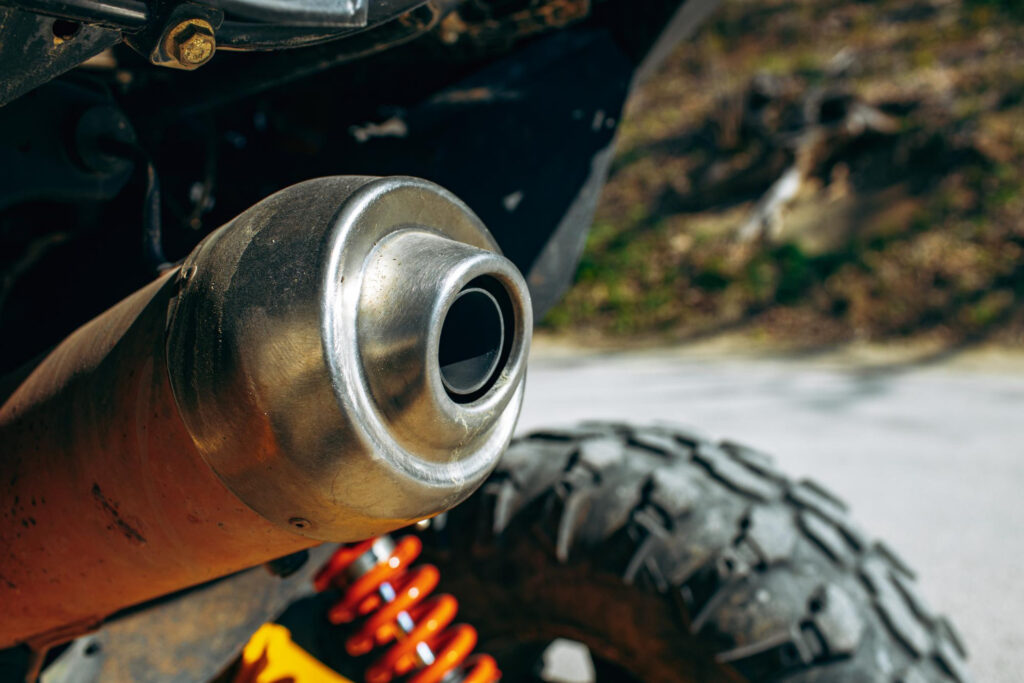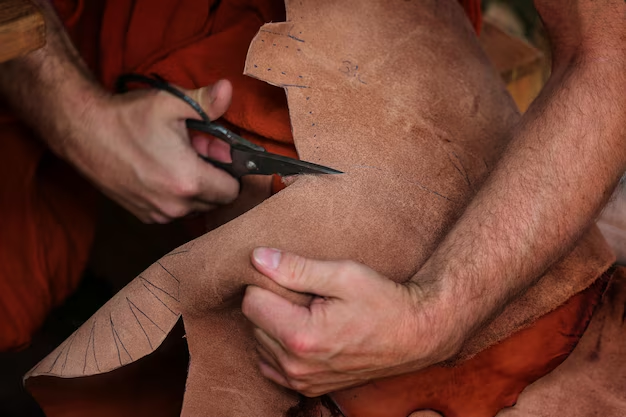In the world of motorcycles, few names inspire as much nostalgia and passion as the Yamaha RD series. These two-stroke machines, with their distinctive sound and agile performance, became symbols of freedom and speed for generations of riders. Central to this legacy is the escapamento RD—the exhaust system that does far more than expel gases.
The escapamento RD is the heartbeat of the Yamaha RD, shaping not only the way the engine performs but also the way it sounds, feels, and connects with riders. To enthusiasts, it is more than a mechanical part—it is an identity, a symbol of motorcycle culture, and a reminder of the golden age of two-stroke performance.
This article explores the escapamento RD in detail—its role in engine performance, the science behind its design, the cultural importance of its sound, and why it remains legendary even in today’s motorcycle world.
The Role of the Escapamento RD in Two-Stroke Performance
Unlike four-stroke motorcycles, two-stroke engines rely heavily on the design of their exhaust system. The escapamento RD is not just a pipe—it is a carefully engineered system that controls how gases flow, how the engine breathes, and how efficiently it burns fuel.
In Yamaha’s RD series, this exhaust plays a direct role in defining the power band—the range of RPMs where the engine delivers its strongest performance. Riders often describe the moment the RD “comes alive,” when the engine surges with power, as the product of the expansion chamber design in the exhaust.
The escapamento RD ensures that performance is not wasted. By reflecting pressure waves back into the cylinder at the right time, it helps retain the unburned fuel-air mixture and boosts combustion. Without this precise timing, the RD would lose much of the energy that makes it so exciting to ride.
Inside the Design: What Makes the Escapamento RD Unique
The secret to the escapamento RD lies in its expansion chamber. Unlike straight pipes, which simply carry gases out, the chamber is shaped to create a resonance effect that improves both power and efficiency.
When combustion happens, exhaust gases rush out of the cylinder. Instead of escaping completely, part of that wave is reflected back into the chamber. This returning pulse acts like a barrier, pushing the fresh fuel mixture back into the cylinder just before the piston closes. The result is more power, better fuel use, and that distinctive sharp exhaust note riders love.
The shape, diameter, and length of the chamber directly influence:
- The torque curve—whether the bike has more power at low RPMs or high RPMs
- The width of the power band—whether the engine feels smooth or explosive
- The sound—ranging from a high-pitched scream to a deeper growl
Even the materials—whether steel, stainless steel, or lightweight alloys—change the way the exhaust performs and lasts. It’s this balance of engineering and artistry that makes the escapamento RD a defining feature of Yamaha’s two-stroke machines.
Types of Escapamento RD for Different Riders
Not all escapamento RD systems are the same. Over the years, riders have experimented with different setups depending on whether they value originality, performance, or individuality.
The original factory exhausts are prized by collectors for their authenticity. They maintain the bike’s vintage look and classic sound, making them essential for restorations. Though heavier and less powerful than modern alternatives, they hold cultural and financial value.
Aftermarket performance exhausts are designed for riders seeking more speed and agility. Brands like WR, Pro Tork, Coyote, and Roncar produce systems that make the RD sharper and livelier. These exhausts reduce weight and improve airflow, but they often require adjustments to the carburetor or ignition to unlock their full potential.
For those who want something unique, custom-built escapamento RD systems offer endless possibilities. Skilled tuners design chambers tailored to specific riding styles, whether for drag racing, track performance, or urban riding. These custom pipes can transform how an RD feels and sounds, though their quality depends heavily on the builder’s expertise.
The Sound of the Escapamento RD and Its Cultural Impact
Ask any RD enthusiast what makes the bike unforgettable, and the answer will often be the sound. The escapamento RD produces a piercing, high-pitched scream that echoes through city streets and racetracks alike. This sound is more than noise—it is an emotional trigger that signals speed, freedom, and adrenaline.
The unique tone comes from the expansion chamber’s resonance and the rapid two-stroke firing cycle. The result is a crisp, urgent note that rises dramatically as the RPM climbs. For many, this sound is as iconic as the bike itself, often compared to a musical instrument tuned for excitement.
In countries like Brazil, India, and parts of Europe, the sound of the RD exhaust became part of youth culture. Riders gathered in groups, not just to race, but to listen, compare, and admire different escapamento setups. Today, videos of RD exhaust notes are shared online, keeping the culture alive.
Tuning and Performance Upgrades with the Escapamento RD
Changing the exhaust without adjusting the engine is a common mistake. The escapamento RD is so deeply tied to performance that modifications must be matched with careful tuning.
Carburetor jetting often needs adjustment to provide the right air-fuel balance. A performance exhaust allows more airflow, but without the right jet sizes, the engine may run lean and lose power. Similarly, ignition timing sometimes needs fine-tuning to match the new resonance of the exhaust.
When paired correctly, a performance-focused escapamento RD can increase horsepower by 15–25%. Combined with a high-flow air filter and optimized carburetion, the RD becomes sharper, faster, and even more thrilling.
For riders, this tuning process is part of the joy. It’s not just about bolting on a new part—it’s about finding the perfect harmony between engine, exhaust, and rider preference.
Maintenance and Care for Your Escapamento RD
Like all two-stroke exhausts, the escapamento RD requires care to perform at its best. Because two-strokes burn oil along with fuel, carbon buildup inside the exhaust is inevitable. Over time, this reduces performance and dulls the sound.
Regular cleaning is essential. Many riders use a heat-and-burn method, heating the pipe to burn out carbon deposits, while others use chemical solutions to dissolve buildup. Rust prevention is equally important, especially for chrome or steel pipes. Storing the bike in a dry environment and polishing regularly helps preserve its shine.
For exhausts with silencers, replacing fiberglass packing ensures the sound stays crisp and controlled. Riders who skip this step often notice their bike becoming louder but losing efficiency. With proper care, an escapamento RD can last decades, continuing to deliver the sound and performance riders expect.
Escapamento RD in Racing and Street Culture
The RD’s reputation as a performance machine was forged on the racetrack. In both official competitions and underground races, the escapamento RD became the weapon of choice for riders chasing speed.
Racers learned quickly that modifying the exhaust could shave seconds off lap times. Shorter pipes delivered explosive acceleration for drag racing, while longer, more refined chambers provided smoother power delivery for track riding. In some cases, mufflers were removed entirely to reduce backpressure, trading legality for maximum output.
Beyond racing, the escapamento RD became a badge of honor in street culture. In many countries, young riders customized their exhausts not just for performance but for identity. The sound of a tuned RD roaring down the street was instantly recognizable, a signal that the rider belonged to a passionate global community.
Legal and Environmental Considerations of the Escapamento RD
With great sound and performance comes responsibility. Around the world, noise and emission regulations affect how riders can use aftermarket or custom escapamento RD systems.
In some regions, exceeding noise limits can result in fines, bike inspections, or even confiscation. Riders often keep removable silencers to stay within legal limits during daily use while still enjoying full performance at events or races.
Environmental considerations are also growing. Two-stroke engines naturally produce more emissions than modern four-strokes, and stricter regulations make it harder for old RD models to remain street-legal in some places. Still, many enthusiasts argue that preserving these bikes and their unique exhausts is part of cultural heritage.
Conclusion: Why the Escapamento RD Remains Legendary
The escapamento RD is far more than a mechanical component. It is the voice of Yamaha’s two-stroke legend, the force that shapes its power, and the symbol that unites riders around the world. From its ingenious expansion chamber design to its role in culture and racing, it represents the perfect blend of engineering and passion.
Whether you ride with a stock exhaust, a performance upgrade, or a custom-built masterpiece, the escapamento RD remains the key to unlocking the true character of the RD series. Its sound, performance, and legacy continue to inspire new generations, proving that even decades later, the heartbeat of Yamaha’s two-stroke icon still echoes loudly across roads and racetracks worldwide.




